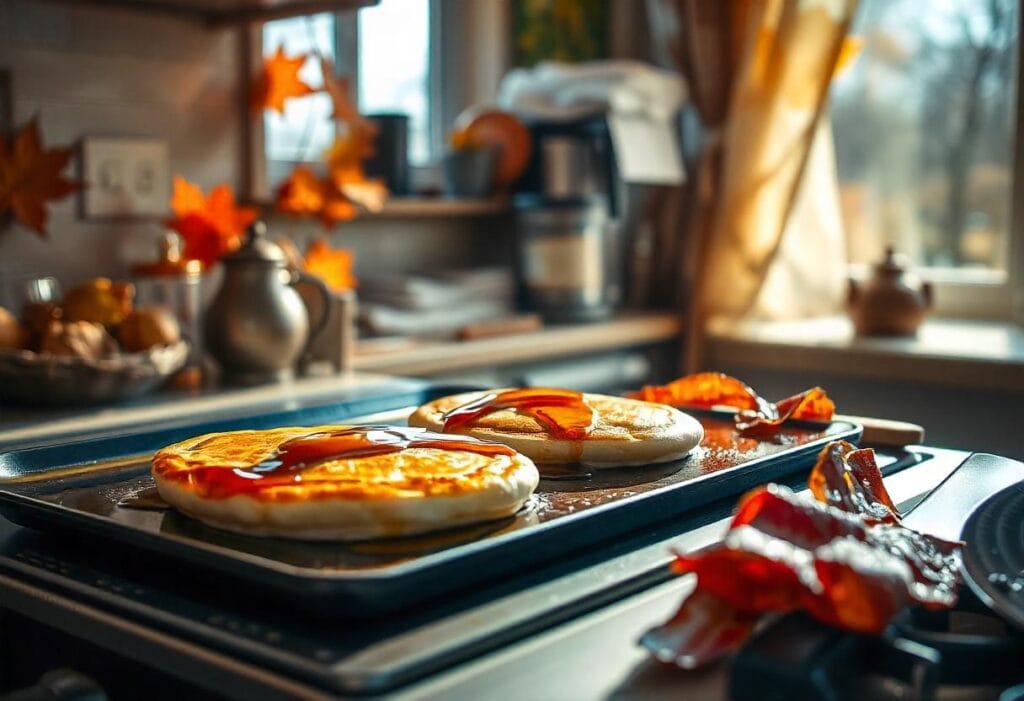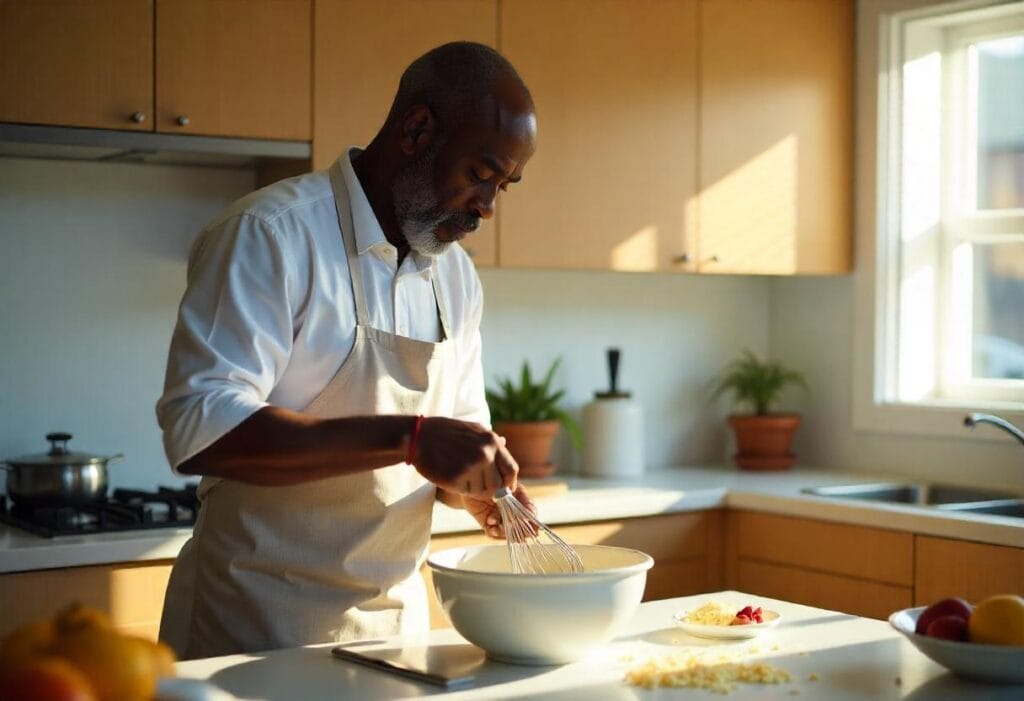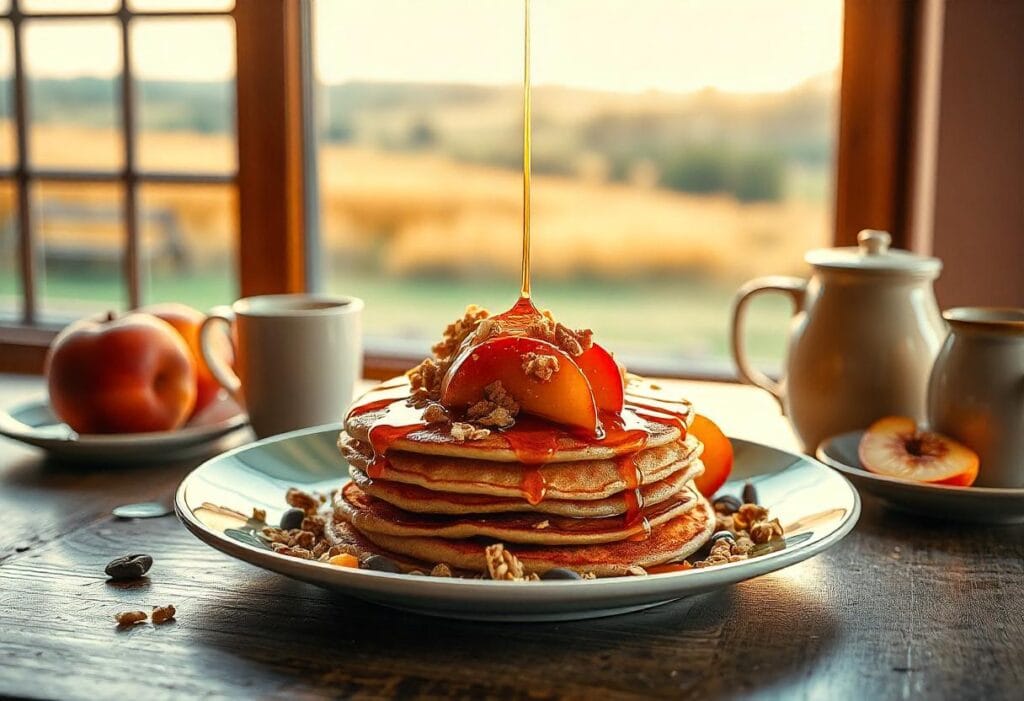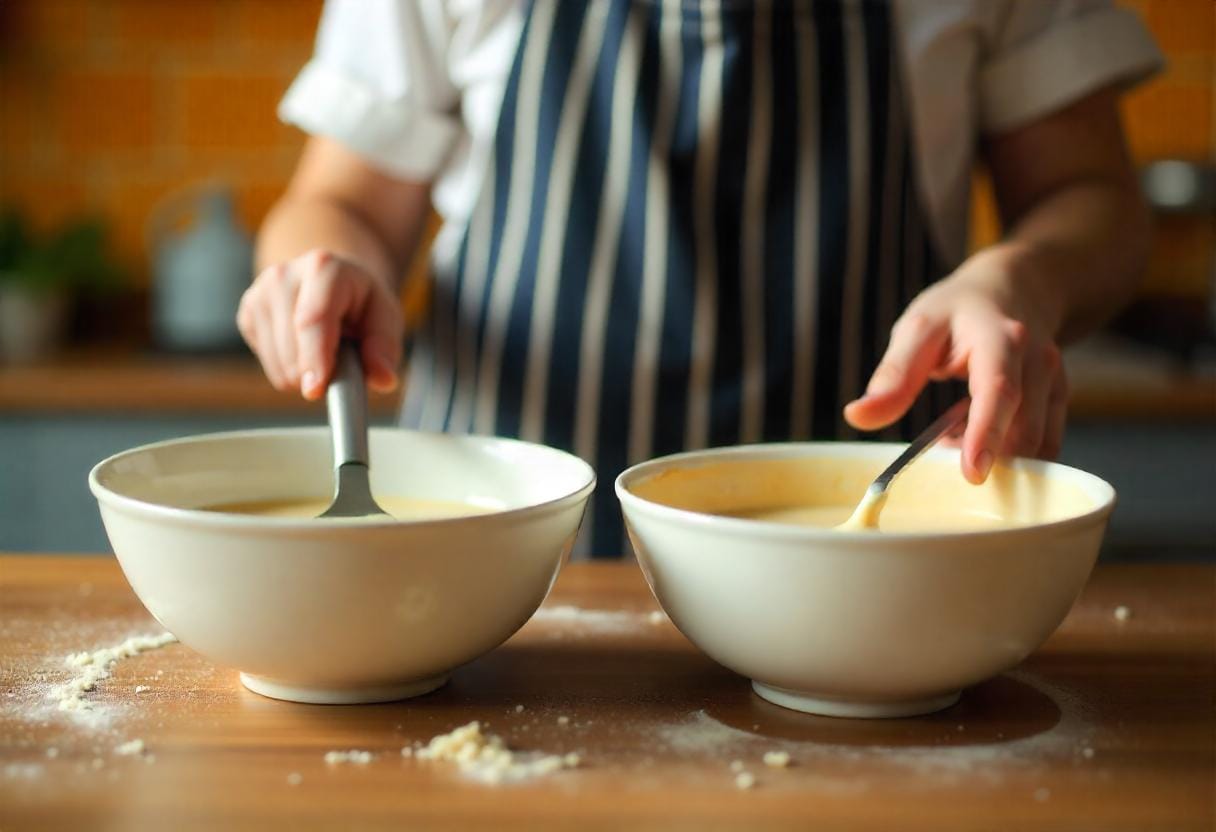Is pancake mix better with water or milk? 🥞 It’s a question that has puzzled breakfast enthusiasts for years. The liquid you choose can dramatically impact the texture, flavor, and overall quality of your pancakes. Whether you prefer the simplicity of water or the richness of milk, understanding how each works will help you create the perfect stack every time.
In this article, we’ll dive deep into the science, pros, and cons of using water or milk in your pancake mix. By the end, you’ll know exactly which option is best for your taste buds and breakfast goals.
Introduction: The Great Pancake Debate
Let’s start with the basics. Pancake mix is a pre-measured blend of dry ingredients like flour, sugar, baking powder, and salt. To bring it to life, you need to add a liquid—usually water or milk. Sounds simple, right? But here’s the twist: the liquid you choose makes a big difference in the final result.
“The liquid is the secret ingredient that determines whether your pancakes are light and fluffy or rich and indulgent.”
So, is pancake mix better with water or milk? Let’s explore!
Using Water in Pancake Mix
Water is the most straightforward choice for mixing pancake batter. It’s convenient, accessible, and gets the job done. But what happens when you use water instead of milk?

How Water Affects Pancake Texture and Flavor
Water creates a thinner batter, resulting in pancakes that are light and slightly crispy around the edges. However, because water lacks fat and flavor, the pancakes may taste a bit plain.
Benefits of Using Water
Water has its perks, especially when you’re in a pinch or prefer simplicity:
- Convenience: You can always find water, even if your fridge is empty.
- Low Calories: Water adds no calories, making it ideal for lighter pancakes.
- Dairy-Free: For those avoiding milk, water is an easy alternative.
“Water is like the minimalist of pancake liquids—it’s simple, clean, and gets the job done without much flair.”
Situations Where Water Is the Best Choice
- Camping or Travel: When resources are limited, water is the easiest option.
- Low-Calorie Diets: Water keeps your pancakes light and calorie-friendly.
- Emergency Breakfasts: If you’re out of milk, water saves the day.
Using Milk in Pancake Mix
Milk, on the other hand, is the gold standard for pancake enthusiasts who crave richness and flavor.

How Milk Enhances Pancake Flavor and Texture
Milk contains fat and natural sugars that add depth to the flavor and tenderness to the texture. Pancakes made with milk are fluffier, softer, and have a slightly sweet taste that pairs perfectly with syrup or toppings.
Nutritional Benefits of Adding Milk
| Nutrient | Water (Per Cup) | Milk (Per Cup) |
|---|---|---|
| Calories | 0 | 103 |
| Protein | 0g | 8g |
| Fat | 0g | 2.4g |
| Calcium | 0% | 24% of daily value |
Milk not only enhances flavor but also boosts the nutritional value of your pancakes.
Best Practices for Using Milk in Pancake Mix
- Use Room-Temperature Milk: It mixes more evenly and activates the leavening agents better.
- Try Buttermilk: For an extra tangy flavor and ultra-fluffy texture, swap regular milk for buttermilk.
“Milk is like the magic wand of pancake liquids—it transforms ordinary batter into a breakfast masterpiece.”
Comparing Water and Milk in Pancake Mix
Now, let’s put water and milk side by side to see how they stack up.
Texture: Fluffy vs. Tender Pancakes
- Water: Creates thinner, lighter pancakes with crispier edges.
- Milk: Produces soft, tender pancakes that feel richer.
Flavor: Subtle vs. Rich
- Water: Offers a neutral flavor that pairs well with strong toppings.
- Milk: Adds sweetness and depth, even without extra toppings.
Nutritional Differences
Using milk increases the calorie count but also provides essential nutrients like protein and calcium, making it a more filling option.
Common Problems When Mixing Pancake Batter with Water or Milk
Even with the right liquid, mixing pancake batter can sometimes go wrong. From lumps to uneven cooking, here are the most common issues and how to fix them.
Batter Too Thin or Too Thick
A batter that’s too thin will spread too much, making flat, fragile pancakes. On the other hand, a batter that’s too thick won’t spread at all, leading to uneven cooking.
Solution:
- For thin batter: Add a tablespoon of pancake mix or flour at a time until the consistency thickens.
- For thick batter: Add a small amount of your chosen liquid (water or milk) and stir gently until it’s pourable but not runny.
Uneven Cooking or Burning
Sometimes pancakes cook unevenly, with parts that are burnt while others remain undercooked. This is often caused by inconsistent griddle temperatures or overly thick batter.
Solution:
- Keep your griddle at a consistent medium heat (around 375°F).
- Spread the batter evenly using a ladle or measuring cup.
Adjusting Consistency When Substituting Liquids
If you decide to use plant-based milk, juice, or other alternatives, the batter might behave differently. Almond milk, for example, can make the batter slightly thinner, while buttermilk will thicken it.
Pro Tip: Always start with a smaller amount of liquid and gradually add more until you reach the desired consistency.
“Pancake batter should flow like heavy cream—not too runny, not too stiff.”
Tips for Perfect Pancakes, Regardless of Liquid
Great pancakes aren’t just about the liquid you choose—it’s also about the techniques you use to mix, rest, and cook the batter.
Achieving the Right Consistency
Consistency is king when it comes to pancake batter. A good rule of thumb is that the batter should coat the back of a spoon without dripping off too quickly.
Mixing Techniques for Fluffy Pancakes
- Don’t Overmix: Stir just until the dry ingredients are moistened. Lumps are okay—they’ll disappear as the pancakes cook.
- Use a Whisk: A whisk helps incorporate air into the batter, making your pancakes fluffier.
Resting the Batter: Why It’s Important
Resting the batter for 5–10 minutes allows the flour to fully absorb the liquid and the leavening agents to activate. The result? Fluffier, more tender pancakes.
Creative Alternatives to Water and Milk in Pancake Mix
If you’re feeling adventurous, try experimenting with different liquids to create unique flavors and textures.

Plant-Based Milk Options
Plant-based milks like almond, oat, or coconut milk are excellent for dairy-free pancakes. Each option adds its own twist:
- Almond Milk: Mild and slightly nutty, perfect for delicate flavors.
- Oat Milk: Creamy and neutral, ideal for fluffy pancakes.
- Coconut Milk: Adds a tropical sweetness that pairs well with fruit toppings.
Adding Juice or Other Liquids for Flavor
Juices like orange or apple can add natural sweetness and a subtle fruity flavor to your pancakes. Be cautious with citrus juices, as their acidity can react with leavening agents and change the texture.
« Adding a splash of juice is like giving your pancakes a little personality boost! »
Combining Liquids for Unique Textures
Why settle for one liquid when you can mix them? Combining water and milk, or even milk and buttermilk, can create a balanced texture and flavor profile.
Exploring the Science Behind Pancake Batter Liquids
The choice of water or milk in pancake mix isn’t just about preference—it’s rooted in science. The liquid interacts with the other ingredients to create the texture, rise, and flavor we love in pancakes.
How Liquids Activate Leavening Agents
Pancake mixes usually contain leavening agents like baking powder or baking soda. These ingredients release gas when they react with liquids, causing the batter to rise and create fluffy pancakes.
- Water: Activates the leavening agents effectively but doesn’t add additional richness.
- Milk: Enhances the leavening reaction while also contributing fats and proteins, which create a softer texture.
Pro Tip: If you want extra fluffy pancakes, let the batter rest for 5–10 minutes to allow the leavening agents to work their magic.
The Role of Fat in Pancakes
Milk contains small amounts of fat, which plays a crucial role in making pancakes tender and preventing them from drying out. Water, lacking fat, results in pancakes that might feel drier or less flavorful unless paired with rich toppings.
Creative Uses for Pancake Batter Beyond Breakfast
Pancake batter isn’t limited to breakfast—it’s a versatile base for creative dishes throughout the day. Let’s explore some fun ideas for using your batter in new ways.
Savory Pancake Dishes
Pancake batter can double as a base for savory creations:
- Veggie Fritters: Add shredded zucchini, carrots, or potatoes to pancake batter for easy, crispy fritters.
- Mini Pancake Pizzas: Use smaller pancakes as a base, topping them with marinara, cheese, and your favorite toppings.
- Batter-Dipped Veggies: Dip broccoli or onion rings into the batter and fry for a crispy side dish.
« Think outside the pan—pancake batter can transform into gourmet creations! »
Desserts and Snacks with Pancake Batter
If you have leftover batter, why not turn it into something sweet?
- Pancake Muffins: Pour batter into muffin tins and bake for a portable treat.
- Funnel Cakes: Add a touch of sugar to your batter, then drizzle it into hot oil for carnival-style funnel cakes.
- Battered Fruit: Dip apple slices, bananas, or strawberries in batter and fry until golden.
How to Pair Toppings with Your Pancake Liquid Choice
Your choice of liquid can influence which toppings work best with your pancakes. Here’s a handy guide:
| Liquid Used | Recommended Toppings |
|---|---|
| Water | Fresh fruit, maple syrup, light spreads |
| Milk | Whipped cream, chocolate syrup, nuts |
| Buttermilk | Honey, berries, or savory toppings |
Pro Tip: If you use water for a neutral base, bold toppings like Nutella or caramel can add the richness that water alone doesn’t provide.
Exploring Regional Preferences for Pancakes
Did you know that the water-versus-milk debate varies by region? Different cultures have their own take on how pancakes should taste and feel.
American Pancakes
In the U.S., milk is the go-to liquid for pancake batter. This results in soft, fluffy pancakes that pair well with butter and syrup. But water is also used for lighter, crispier versions served in diners.
European Crêpes
In France, crêpes are often made with milk or a combination of milk and water. The milk adds richness, while the water keeps the batter thin enough to spread evenly.
Asian Hotcakes
Japanese hotcakes use milk or buttermilk to create their iconic thick, fluffy texture. In contrast, Korean Hotteok (sweet pancakes) often use water, relying on the filling for flavor.
« Every region has its own spin on pancakes, showing that there’s no one-size-fits-all approach to breakfast! »
Making Pancakes Eco-Friendly with Sustainable Choices
Your choice of liquid can also impact the environment. Let’s explore how to make pancakes in a more sustainable way.
Using Plant-Based Milks
Opting for almond, oat, or soy milk instead of cow’s milk can reduce your carbon footprint.
- Oat Milk: The most eco-friendly choice among plant-based options.
- Soy Milk: High in protein and widely available.
Minimizing Food Waste
If you’re using milk and notice it’s near its expiration date, pancake batter is a perfect way to use it up. The same goes for juice or other liquids lingering in your fridge.
« A sustainable breakfast is one where every ingredient has a purpose. »
Troubleshooting Pancake Issues for Perfect Results
Even with all the right ingredients, pancake-making can sometimes go awry. Here are additional troubleshooting tips to help you nail it every time.
Why Do Pancakes Stick to the Pan?
This issue is often caused by insufficient greasing or a pan that’s too cold.
Solution:
- Preheat the pan and lightly grease it with butter or oil.
- Use non-stick cookware for hassle-free flipping.
Why Are My Pancakes Too Dense?
Dense pancakes often result from overmixing the batter, which develops too much gluten.
Solution:
- Stir gently, just until the wet and dry ingredients are combined.
- Rest the batter for a few minutes to relax the gluten.
Why Are My Pancakes Unevenly Cooked?
Uneven cooking happens when the griddle isn’t evenly heated or the batter is too thick.
Solution:
- Ensure your griddle is preheated and evenly heated.
- Thin the batter slightly if it’s not spreading well.
Frequently Asked Questions About Pancake Mix Liquids
Here’s where we answer your most pressing questions about choosing the right liquid for pancake mix.
Can You Mix Water and Milk Together?
Yes! Combining water and milk can give you the best of both worlds: the lightness of water with the richness of milk.
What’s the Best Liquid for Dairy-Free Pancakes?
Almond milk and oat milk are popular choices, but coconut milk works well if you want a hint of sweetness.
How Do Different Liquids Affect Cooking Times?
Milk-based batters might take slightly longer to cook because of the added fat and sugar, while water-based batters cook faster but can dry out if overcooked.
Enhancing Your Pancakes with Toppings and Add-Ins
The liquid you choose affects your pancake base, but toppings and add-ins can elevate your breakfast game even further.
Sweet Add-Ins
- Chocolate Chips: For melty pockets of sweetness.
- Berries: Blueberries or raspberries add a burst of flavor.
- Spices: A dash of cinnamon or nutmeg enhances the batter.
Savory Add-Ins
- Cheese: Shredded cheddar or parmesan adds a savory twist.
- Herbs: Fresh chives or parsley for a unique flavor profile.
Topping Ideas
| Topping | Pairing Liquid |
|---|---|
| Maple Syrup | Milk-based pancakes |
| Fresh Fruit | Water-based pancakes |
| Whipped Cream | Buttermilk or milk pancakes |
« The right toppings can turn a simple pancake into a gourmet experience! »
Conclusion: Choosing the Best Liquid for Your Pancakes
When it comes to deciding whether pancake mix is better with water or milk, the answer lies in your personal preference and the type of pancakes you want to create.
- Use Water: If you’re looking for simplicity, lighter pancakes, or a dairy-free option. Water is practical and ensures a quick, no-fuss breakfast.
- Use Milk: For richer flavor, softer texture, and added nutritional benefits. Milk takes your pancakes to the next level of indulgence.
« The beauty of pancakes is their versatility—there’s no wrong choice, only delicious possibilities. »
Whether you opt for water, milk, or something entirely creative, the key is to experiment and make it your own. After all, the perfect pancake isn’t just about the ingredients; it’s about the love and care you pour into every flip. 🥞
Now that you’re equipped with the knowledge, it’s time to grab your mix, choose your liquid, and whip up the best pancakes of your life. Happy cooking!
So, is pancake mix better with water or milk? The answer depends on your taste preferences, nutritional goals, and the occasion

